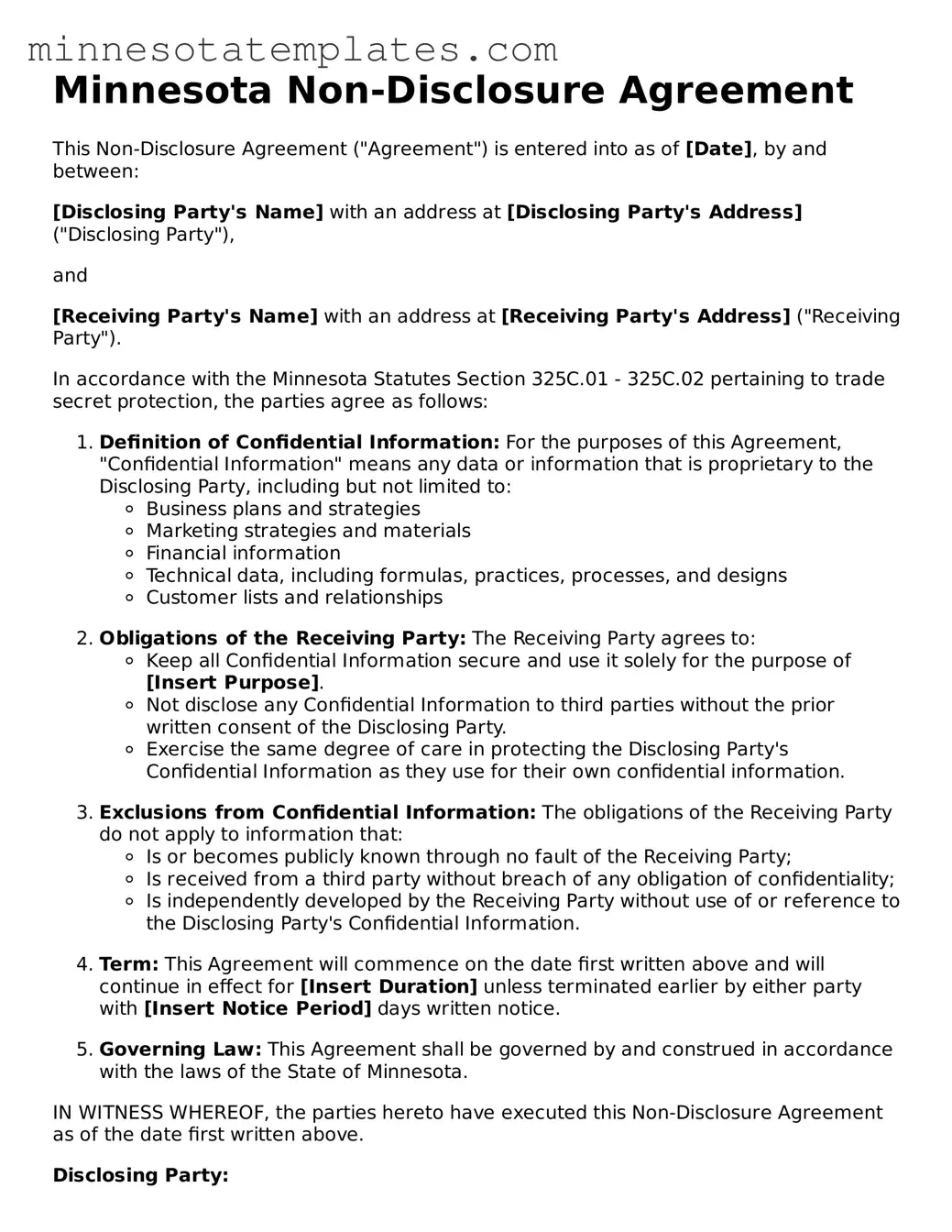Valid Non-disclosure Agreement Form for the State of Minnesota
A Minnesota Non-disclosure Agreement (NDA) is a legal document designed to protect confidential information shared between parties. This form establishes a mutual understanding of what information must remain private, ensuring that sensitive details do not fall into the wrong hands. To secure your interests, consider filling out the form by clicking the button below.
Access Your Form Now
